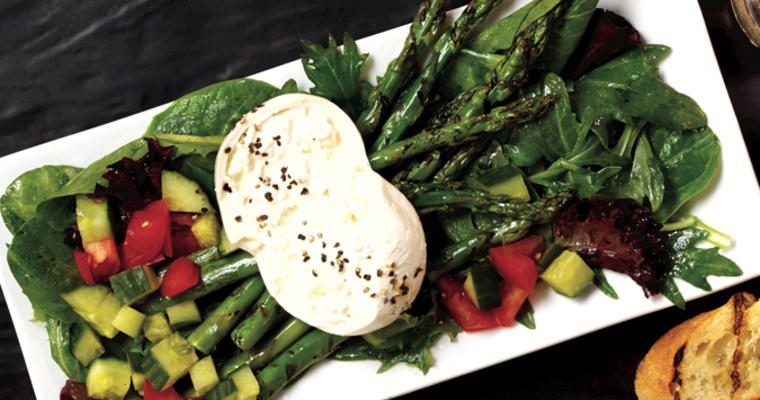In our most recent cross-country research trip, we noticed a new focus emerging. Blending Italian cuisine with the gastropub model, Italian “gastrotecas” offer a compelling mix of rich, complex cooking and casual comfort.
As Italian food continues to be the most popular global cuisine across all demographics, it’s no surprise that a mashup of these two styles has become a trend in its own right.
Pub dining has an indulgent aspect that plays well with Italian cuisine. We’re talking Italian-grandma cooking at its best: hearty, rich, rustic dishes that are big on flavor and comfort-food appeal.
Pappardelle Is The New Fettucine
Oversized noodles and flavorful, rustic sauces define the pastas of the Italian gastropub. Buccatini, long ziti, trine’ (which resembles inch-wide lasagna noodles), and paccheri (jumbo elbow noodles) dominate menus and offer a menu-ready opportunity for all full-service restaurants to capitalize on the trend. Larger pastas hold up well to hearty, rustic sauces like sugo and ragu—thick, chunky, and highly flavorful. The black peppercorn rigatoni at Acanto in Chicago hits the trifecta: oversized pasta, a rich and hearty lamb ragout, and a topping of caciocavallo cheese and toasted breadcrumbs.
Mortadella—It’s No Baloney
For indulgence it’s difficult to beat mortadella. There is no comparison to American bologna. Hot or cold, mortadella’s rich pork flavor makes it an ideal sandwich component, and it can stand up to bold garnishes and a wide variety of breads and cheeses. At Bar Primi in New York, the mortadella panini comes on a sesame roll and is stuffed with a one-inch stack of warm grilled mortadella, scrambled eggs, fontina cheese, and spicy peppers. It’s an indulgent sandwich that works equally well for brunch, lunch, or a late-night bar menu. Traditionally, you’ll find mortadella sliced thin, but it’s also excellent in a thick steak-style cut, which can be grilled as the base for an entrée or breakfast plate.
Whole Hog
“Nose to tail” has always been the anthem of gastropubs, and this is certainly true of their Italian counterparts. Rough cuts of meat offer flavor and value, and there is perhaps no greater example of this than porchetta. Earmarked in an official list of traditional foods, porchetta can be found in nearly every region of Italy. Porchetta is classically a small whole hog, deboned and seasoned with fennel, sage, rosemary, oregano, salt, and pepper ground into a paste with olive oil. Modern methods use pork loin and pork belly, seasoned traditionally, rolled up together and tied before roasting. Slow and careful cooking yields a succulent, tender meat infused with lusty flavors.
Meatballs Stay On Trend
Meatballs in various applications have long been popular. If you want to stand out, you’ll need to elevate from a standard preparation. Chef Michael White’s Osteria Morini in New York features polpettine—tiny meatballs—made more luxurious with mortadella, prosciutto, and fresh Parmesan. Oversized meatballs, like the giant spicy meatball at Cocello in Chicago made with beef, pork, and veal and smothered in spicy tomato sauce and Parmesan, appeal to customers’ sense of value and have a unique presentation aspect.
Grains Offer Value and Opportunity
Rustic porridge and warm grain salads feature heavily on Italian-gastropub menus. Affordable grains in their many varieties are a chance to grab menu differentiation while offering customers a delicious experience. Polenta in particular provides lots of opportunity. Stoneground cornmeal slow-cooked with broth or stock, polenta can be served warm and soft topped with braised meat or roasted vegetables, but it can also be chilled and cut into squares or wedges and deep-fried until crispy. Other grain-based dishes feature farro, which can be served at room temperature as part of a composed salad or in a hot dish such as the braised oxtail stafoto, a rustic meat stew, at Vic’s in New York. These dishes perhaps best exemplify the gastropub model: Creativity and sweat equity transform humble, low-cost ingredients into flavorful, soul-satisfying fare.
The gastropub movement sets aside stuffiness and pretension, and gets down to the business of eating and eating well. It’s handcrafted food, with an emphasis on hearty comfort dishes, paired with a craft-beverage program focused on microbrews and affordable wine. That’s a winning combination in any language.











